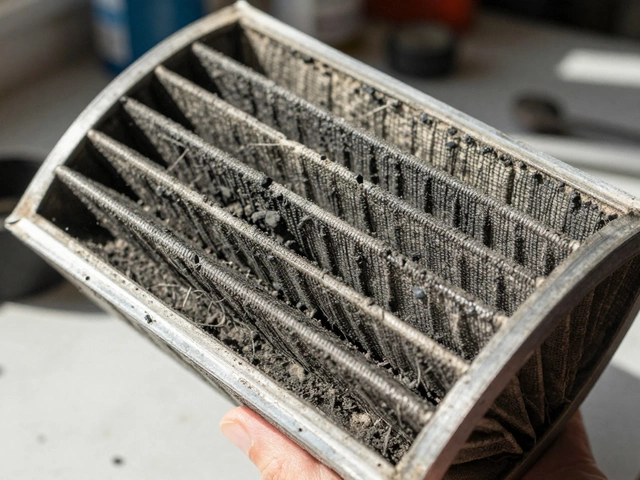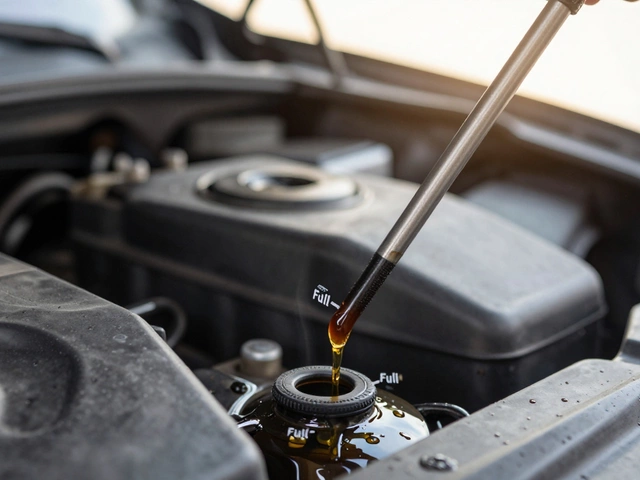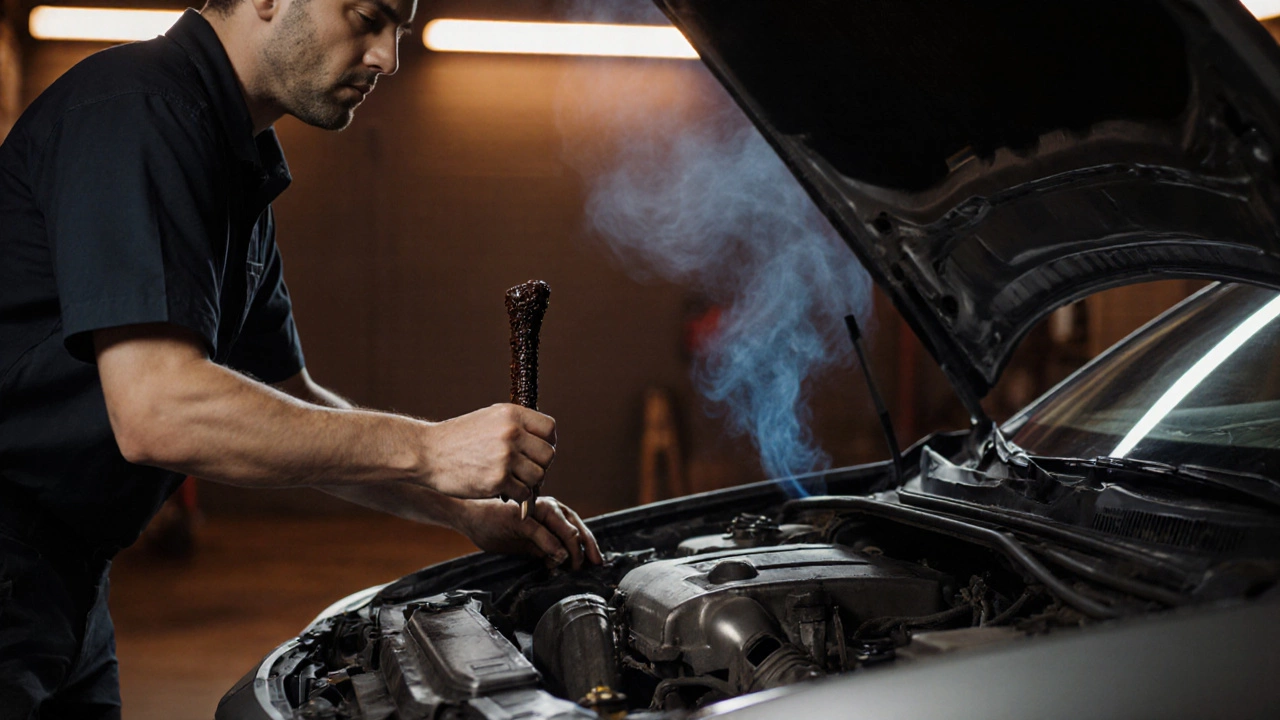
Engine Oil Condition Checker
Check Your Oil Condition
Select symptoms you're experiencing to determine if your engine oil is likely dirty or contaminated.
Result
Noticing odd noises, smoky exhaust, or a drop in fuel mileage? Those are often the first clues that your car is running on dirty engine oil symptoms. Understanding what dirty oil looks, feels, and sounds like can save you from expensive repairs and keep the engine humming.
Why clean oil matters
Engine oil does more than just lubricate moving parts. It cools the engine oil a specially formulated lubricant that reduces friction, carries heat away from hot components, and captures contaminants. When the oil gets thinned out or filled with debris, its ability to protect the piston the metal cylinder that compresses the fuel‑air mixture and bearings drops dramatically. That’s when you start seeing the warning signs.
Top signs your oil is dirty
- Dark, gritty appearance on the dipstick - a thick, brown or black sludge instead of a clear amber.
- Oil smells burnt or smells like gasoline - indicates overheating or fuel dilution.
- Engine noise changes - louder ticking, knocking, or squealing as metal starts to grind.
- Excessive smoke from the exhaust - especially blue or black smoke that suggests oil is burning.
- Loss of power or reduced fuel efficiency - the engine works harder because the oil can’t flow freely.
- Warning light illumination - the oil pressure sensor detecting low pressure.
How to confirm oil condition
- Park on level ground and let the engine cool for at least 10 minutes.
- Pull the dipstick, wipe it clean, then re‑insert fully.
- Remove it again and examine the color and texture. Clean oil should be translucent amber; anything brown, black, or gritty is a red flag.
- Smell the oil. A sweet burning odor points to overheating; a strong gasoline scent suggests fuel contamination.
- Check the oil pressure sensor a device that monitors oil pressure and triggers the warning light if levels drop reading on the dashboard. Low pressure can be caused by dirty oil restricting flow.
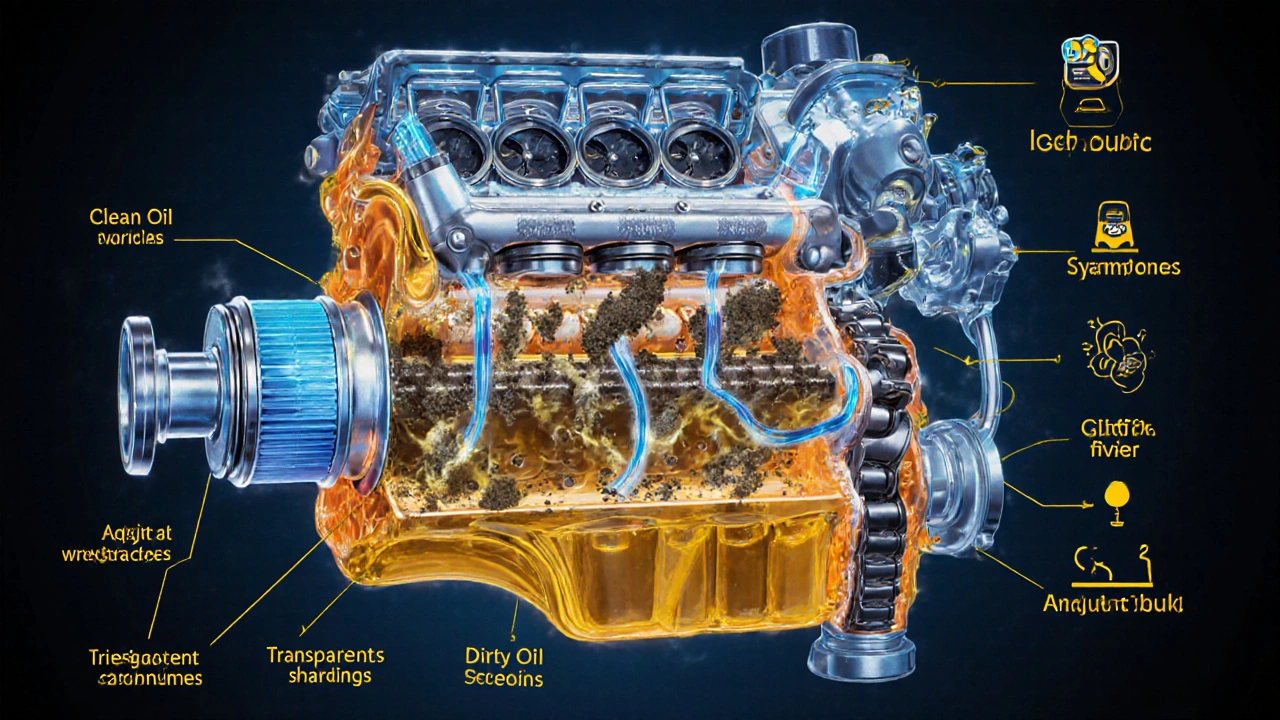
Common causes of oil contamination
| Source of Contamination | Typical Symptom | Underlying Mechanism |
|---|---|---|
| Fuel dilution | Gasoline smell, thinner oil | Fuel leaks past pistons into crankcase |
| Coolant leak | Milky oil, sweet smell | Failed head gasket mixes coolant with oil |
| Metal wear particles | Gritty black sludge | Worn bearings or piston rings shed metal |
| Soot buildup | Dark brown, almost black oil | Incomplete combustion in diesel engines |
| Old oil exceeding service interval | All of the above | Oil loses additive effectiveness over time |
What happens if you ignore dirty oil
Running an engine with contaminated oil is like driving a car with worn‑out brakes - you’ll eventually pay the price. Metal particles act as abrasives, scoring cylinder walls and damaging the turbocharger a turbine‑driven compressor that forces more air into the engine for higher power. Overheating oil can cause the oil pump to fail, leading to catastrophic engine seizure. In the worst cases, the catalytic converter the emissions device that reduces harmful gases can overheat from unburned oil, triggering expensive exhaust repairs.
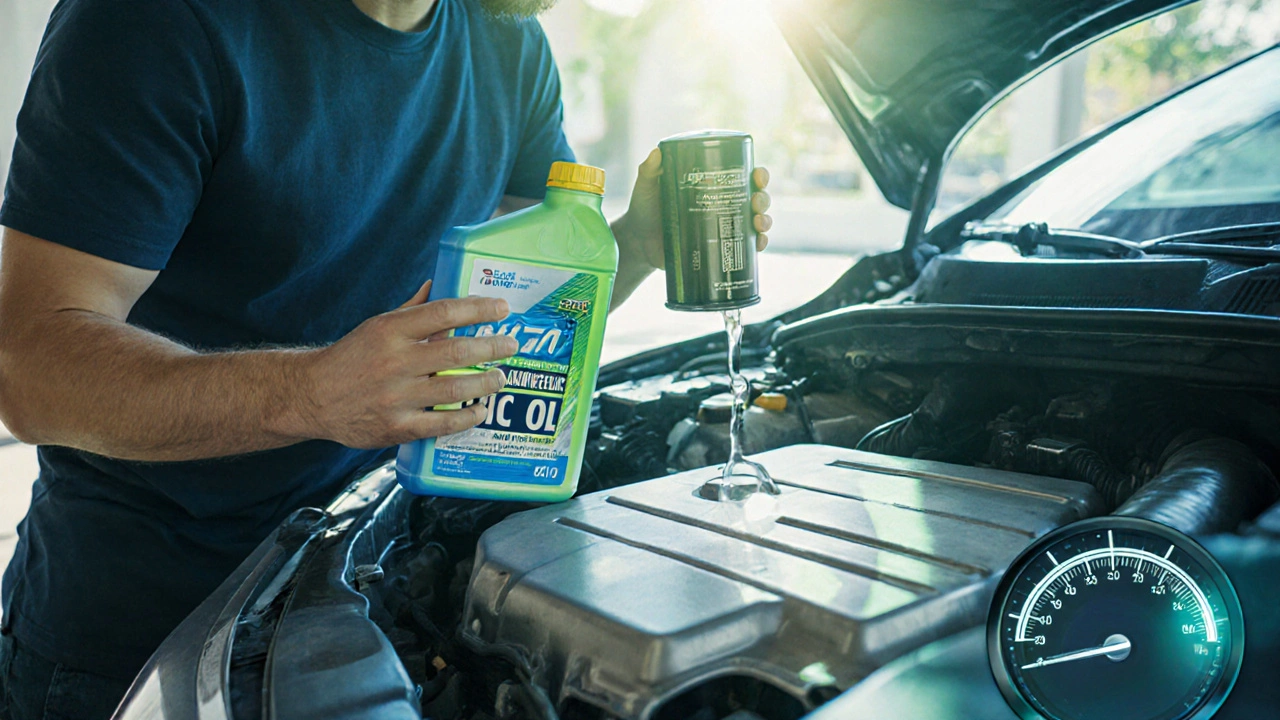
Quick ways to fix dirty oil
- Perform a full oil and oil filter a screen that captures particles before they recirculate change. Use the oil grade recommended by the manufacturer.
- If sludge is severe, consider an engine flush before the new oil is added.
- Replace the oil pressure sensor if the warning light stays on after the change.
- Inspect the piston rings and cylinder walls for scoring if the oil stays dirty after a fresh change.
- Address any coolant or fuel leaks that might be feeding contaminants into the oil system.
Prevention tips for clean oil
- Stick to the service interval in your owner’s manual - most modern cars need an oil change every 7,500-10,000 km.
- Choose high‑quality synthetic oil with robust detergent additives.
- Check the oil level monthly; low levels increase temperature and accelerate breakdown.
- Use an oil analysis service for fleet vehicles or high‑performance cars - a simple lab test can spot contaminants early.
- Warm up the engine briefly after start‑up, especially in cold weather, to let oil circulate before heavy loads.
Frequently Asked Questions
How can I tell if my oil is dirty without a dipstick?
A strong burnt smell from the engine bay, unusual exhaust smoke, or an illuminated oil‑pressure light are common clues. Listening for louder ticking or knocking can also hint at degraded lubrication.
Is dark brown oil always a sign of contamination?
Not always. Fresh synthetic oil can appear darker after the first change, but if it’s gritty, milky, or has a strong odor, it’s likely contaminated.
Can fuel dilution happen in gasoline engines?
Yes, especially in engines with short‑run cycles or faulty fuel injectors. Excess fuel can seep past the piston rings into the crankcase, thinning the oil.
Should I use a turbo‑charged oil when I have a turbocharger?
Turbo‑charged engines often require oil with higher viscosity and specific additives to protect the turbo bearings. Check the manufacturer’s specs - using the recommended oil prevents premature turbo wear.
How often should I replace the oil filter?
Replace the filter every time you change the oil. Some high‑performance filters last a few oil changes, but swapping it each service guarantees optimal filtration.



